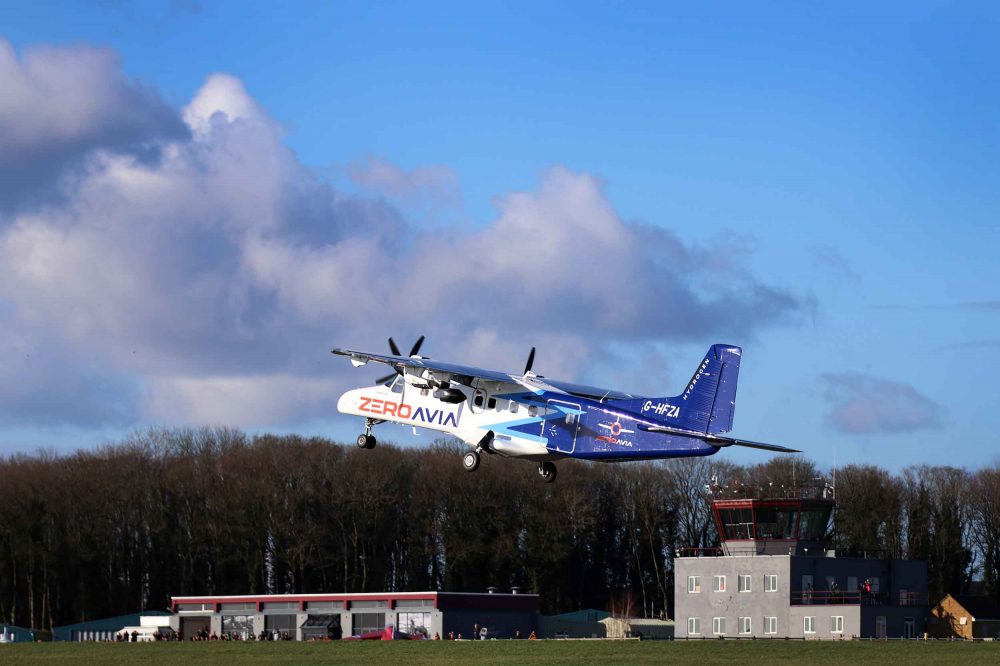+VIDEO Aviation history in the making? Kemble-based ZeroAvia today (Thursday, 19 January 2023) flew the largest aircraft so far to be powered by a hydrogen-electric engine.
It was the maiden flight of ZeroAvia’s 19-seat Dornier 228 testbed aircraft, retrofitted with a full-size prototype hydrogen-electric powertrain on the left wing of the aircraft.
The flight took place from the company’s R&D facility at Cotswold Airport in Gloucestershire, UK, and lasted 10 minutes.
At 13.35 pm GMT this afternoon the aircraft completed taxi, take-off, a full pattern circuit, and landing.
[embedyt] https://www.youtube.com/watch?v=YtpZTWD6dHA[/embedyt]
The flight is part of the HyFlyer II project, a R&D programme backed by the UK Government, which targets development of a 600kW powertrain to support 9-19 seat aircraft worldwide with zero-emission flight.
The twin-engine Do228 was retrofitted to incorporate ZeroAvia’s hydrogen-electric engine on its left wing, which then operated alongside a single Honeywell TPE-331 stock engine on the right.
In this test configuration, the hydrogen-electric powertrain comprises two fuel cell stacks, with lithium-ion battery packs providing peak power support during take-off and adding additional redundancy for safe testing. For the test, hydrogen tanks and fuel cell power generation systems were housed inside the cabin. In a commercial configuration, external storage would be used and the seats restored.
ZeroAvia said all systems performed as expected. The aim is for a certifiable configuration to be finalised and submitted in 2023.
The flight test campaign is being conducted under a full Part 21 flight permit with the UK CAA, a more stringent set of requirements compared to the E-Conditions framework ZeroAvia used for its 6-seat prototype test flights in the past
The Dornier 228 will conduct a series of test flights from Kemble and later demonstration flights from other airports.
Val Miftakhov, founder and CEO of ZeroAvia said, “This is a major moment, not just for ZeroAvia, but for the aviation industry as a whole, as it shows that true zero-emission commercial flight is only a few years away.
“The first flight of our 19-seat aircraft shows just how scalable our technology is and highlights the rapid progress of zero-emission propulsion. This is only the beginning – we are building the future of sustainable, zero climate impact aviation.
Secretary of State for Business, Grant Shapps, said, “Today’s flight is a hugely exciting vision of the future – guilt-free flying and a big step forward for zero-emission air travel. It also demonstrates how government funding for projects like these is translating into net zero growth.”
The hydrogen-electric powertrain on board was fuelled using compressed gaseous hydrogen produced with an on-site electrolyzer. To enable hydrogen production on site, ZeroAvia and HyFlyer II partner, the European Marine Energy Centre (EMEC), have delivered and operated the Hydrogen Airport Refuelling Ecosystem (HARE).
ZeroAvia












